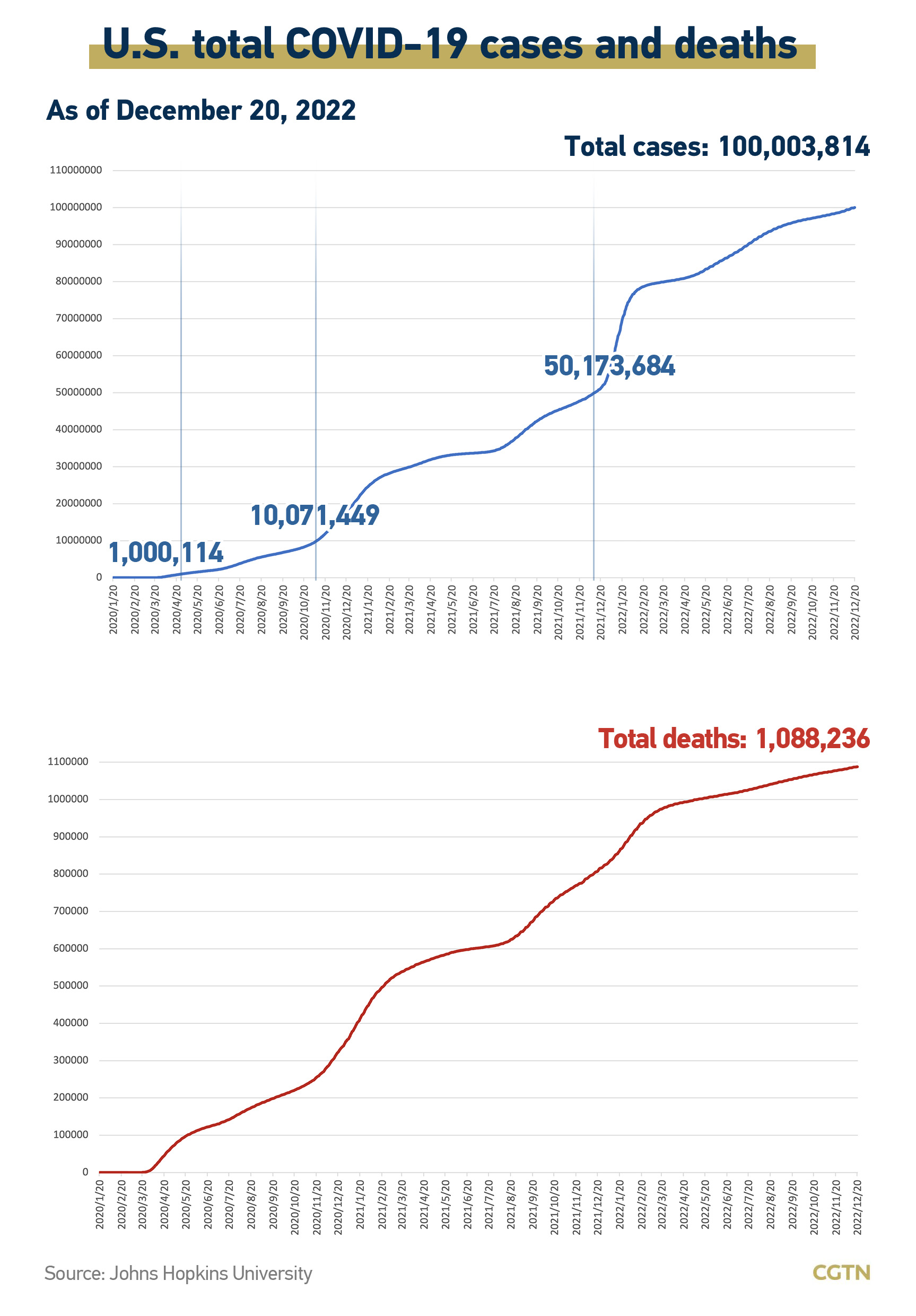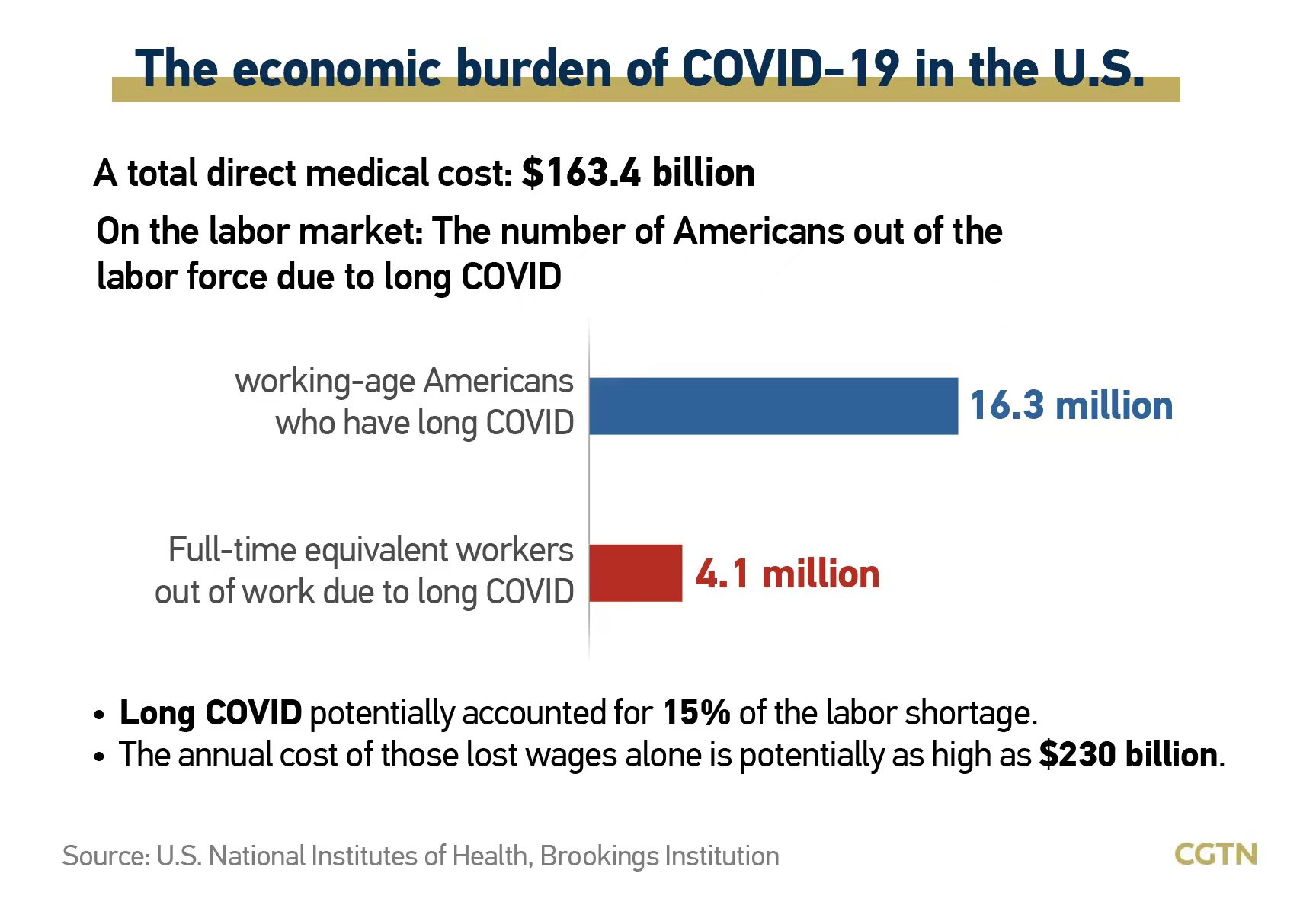
People wear masks after New York City's health officials have issued an advisory, strongly urging New Yorkers to use masks as COVID-19, flu and RSV cases rise, New York, U.S., December 12, 2022. /CFP
People wear masks after New York City's health officials have issued an advisory, strongly urging New Yorkers to use masks as COVID-19, flu and RSV cases rise, New York, U.S., December 12, 2022. /CFP
As the United States struggles with multiple viruses, the total number of confirmed COVID-19 cases in the country surpassed 100 million on Tuesday, according to data from Johns Hopkins University.
The data indicated that the U.S. COVID-19 case count rose to 100,002,248 since the pandemic broke out almost three years ago, with a total of 1,088,218 deaths, as of 5:21 p.m. Eastern Time.
The tally from the U.S. Centers for Disease Control and Prevention (CDC) and the World Health Organization has not yet exceeded 100 million with 99,705,095 cases and 98,525,870 cases recorded respectively.
On the state level, California topped the caseload list, with more than 11.6 million cases, followed by Texas and Florida with confirmed cases of about 8.1 million and more than 7.3 million, respectively.
Omicron subvariants BQ.1 and BQ.1.1 accounted for about 70 percent of new COVID-19 cases in the United States in the week ending December 17; BQ.1 was estimated to make up 30.7 percent of circulating variants, while BQ.1.1 was estimated to make up about 38.4 percent, according to the latest estimates of the U.S. Centers for Disease Control and Prevention (CDC).
The United States remains as the nation worst hit by the pandemic, with the world's most cases and deaths, accounting for more than 15 percent of the global caseload and more than 16 percent of the global deaths.

Labor shortage and unemployment
The after-effect of the 100-million COVID-19 infections is causing chaos in the U.S. labor market as more studies and statistics confirmed that the pandemic persistently reduced labor supply.
An analysis from the National Bureau of Economic Research issued in September suggested that COVID-19 infections have reduced the U.S. labor force by approximately 500,000 people. That is 0.2 percent of people of working age.
Another study published in August by a D.C.-based research think tank, the Brookings Institution, estimated that as many as 2 to 4 million are out of work due to the lingering effects of the virus. And the annual cost of those lost wages alone is around $170 billion to potentially $230 billion.

'Tripledemic' pushes hospitals to brink
"We have seen COVID cases go up. We've seen hospitalizations go up. Deaths are just starting to rise," Dr. Ashish Jha, the White House's pandemic response coordinator, told reporters at a press conference last week.
The COVID-19 surge in winter is only part of the health threat facing the United States, as flu and respiratory syncytial virus (RSV) are also spreading. The trio is dubbed by some doctors as a "tripledemic."
This season's flu outbreak is "the worst in a decade," Jha said. There have been at least 15 million illnesses, 150,000 hospitalizations, and 9,300 deaths from flu so far this season, according to the CDC.
Levels of RSV remain at record or near-record high, the CDC said. RSV causes cold-like symptoms. Despite there being a vaccine available for the virus, it can be serious in infants and older adults.
The Johns Hopkins Coronavirus Resource Center estimated over three-quarters of ICU beds in the U.S. will be occupied through Christmas – a similar level to it was two years ago, during the height of the COVID-19, Fortune reported.